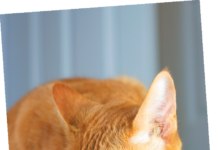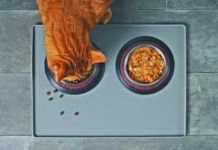If you want to feed your cat homemade food, there’s nothing wrong with that, emphasizes Dr. Heinze. “All you have to do is cook it! That’s the only way we know that these diets are free from bacterial contamination.” While most homemade cat-food diets are nutritionally inadequate, your veterinarian can suggest ways to make sure your cat is getting all the nutrients she needs. If you are feeding a homemade diet, suggests Dr. Heinze, “I would strongly encourage that you consult with a board-certified veterinary nutritionist to make sure it’s a completely adequate diet.” In other words, don’t rely on what you think might be healthy, or follow recipes found on random sites on the Internet.
If, after all this information, you still want to feed your cat raw food, she advises that you check the nutritional adequacy carefully. Look for a statement on the label that the food meetings the standards of the Association of American Feed Control Officials (AAFCO) — that it is complete and balanced for a particular life stage, such as adult maintenance. You should also use special precautions to avoid contamination: “Don’t let the cat sleep in bed with you, and keep her reasonably isolated so she doesn’t get the rest of the family sick — a cat can lick you and spread an E. coli infection. And use gloves when you handle the litter box.” Raw food diets are particularly dangerous if your family includes small children, or anyone who is immunocompromised.



